| February 06, 2008 |  |
MoonDaily Advertising Kit |
| Previous Issues | Feb 05 | Feb 04 | Feb 01 | Jan 31 | Jan 30 |
The Giant Sponge Of Saturn Pasadena CA (JPL) Feb 06, 2008
Pasadena CA (JPL) Feb 06, 2008One of Saturn's rings does housecleaning, soaking up material gushing from the fountains on Saturn's tiny ice moon Enceladus, according to new observations from the Cassini spacecraft. "Saturn's A-ring and Enceladus are separated by 100,000 kilometers (62,000 miles), yet there's a physical connection between the two," says Dr. William Farrell of NASA's Goddard Space Flight Center in Greenbelt ... more NASA Budget Request Strong On Earth Weak On Mars  Pasadena CA (SPX) Feb 06, 2008
Pasadena CA (SPX) Feb 06, 2008Two new Earth-observing satellites, a "flagship" mission to the outer planets, and several small lunar missions are among the highlights of the Administration's budget request for NASA for fiscal year 2009. At $17.6 billion the proposal represents a 1.8% increase over NASA's actual budget for 2008, and $4.44 billion, or just over a quarter of the total, is slated towards NASA's science missions. ... more Plan Bush For Outer Space Facing Critical Open Source Review  Los Angeles CA (SPX) Feb 04, 2008
Los Angeles CA (SPX) Feb 04, 2008Scientists and space policy experts say they will debate whether President George Bush's call for a return to the moon and voyage to Mars is feasible. Hundreds of millions of dollars were spent the last four years to design, build and test spacecraft in the program dubbed Constellation, The Washington Post reported Saturday. The program, however, has not caught the public's imagi ... more NASA Issues Environmental Impact Statement For Constellation  Washington DC (SPX) Jan 31, 2008
Washington DC (SPX) Jan 31, 2008NASA issued an environmental impact statement for the Constellation Program Jan. 10. NASA's Constellation Program is developing a space transportation system that is designed to return humans to the moon by 2020. The Final Programmatic Environmental Impact Statement concludes that localized and global environmental impacts associated with implementing the program would be comparable to past or ... more NASA Uses Vertical Treadmill To Improve Astronaut Health In Space  Washington DC (SPX) Jan 31, 2008
Washington DC (SPX) Jan 31, 2008NASA is using a new treadmill that allows people to run while suspended horizontally to help astronauts prepare for long-duration missions to the moon and beyond. A team of engineers at NASA's Glenn Research Center in Cleveland built the Standalone Zero Gravity Locomotion Simulator to imitate conditions astronauts experience while exercising in space. Exercise in microgravity helps lessen the ... more |
asteroid
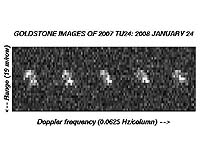 jupiter  asteroid 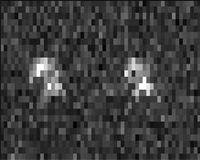 |
 Washington (UPI) Jan 23, 2007
Washington (UPI) Jan 23, 2007 A U.S. study of radar images of the moon suggests deposits from early lunar volcanoes might be useful to astronauts at lunar stations. Bruce Campbell and associates at the National Air and Space Museum said ancient volcanic eruptions on the Moon produced deposits of fine-grained, often glass-rich, pyroclastic material. In some places, such as at the Aristarchus Plateau, the deposits can ... more NG-Built Antennas Helping Provide Data On Moon's Thermal History For Japan's KAGUYA (SELENE) Mission  Carpenteria CA (SPX) Jan 23, 2008
Carpenteria CA (SPX) Jan 23, 2008Four specialized antennas built by Northrop Grumman Corporation for the Japanese Aerospace Exploration Agency (JAXA) are functioning as expected after deploying successfully onboard the SELenological and ENgineering Explorer "KAGUYA" (SELENE), Japan's first large lunar explorer. The four dipole antennas deployed to their 15-meter (49.5 feet) full design length Oct. 31. Manufactu ... more Near-Earth Asteroid 2007 TU24 To Pass Close To Past Earth On Jan 29  Pasadena CA (SPX) Jan 23, 2008
Pasadena CA (SPX) Jan 23, 2008Asteroid 2007 TU24, discovered by the Catalina Sky Survey on October 11, 2007 will closely approach the Earth to within 1.4 lunar distances (334,000 miles) on 2008 Jan. 29 08:33 UT. This object, between 150 and 600 meters in diameter, will reach an approximate apparent magnitude 10. 3 on Jan. 29-30 before quickly becoming fainter as it moves further from Earth. For a brief time the asteroid wi ... more Amateur Radio Operators Asked To Tune Into Lunar Radar Bounce 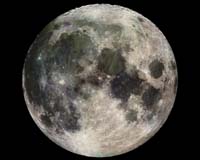 Los Angeles CA (SPX) Jan 18, 2008
Los Angeles CA (SPX) Jan 18, 2008Scientists at the Air Force/Navy High Frequency Active Auroral Research Program (HAARP) in Alaska and the Long Wavelength Array (LWA) in New Mexico back in October, 2007 received what is believed to be the lowest frequency RF echo off the lunar surface. They are set to best that this weekend with yet another lunar echo experiment, and they are asking help from Amateur Radio operators the world over to tune in. ... more |
solarscience
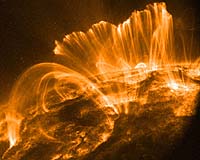 lunar 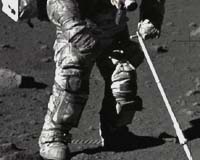 lunar 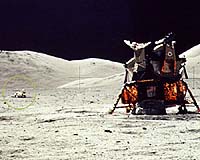 |
 Moffett Field, CA (SPX) Jan 15, 2008
Moffett Field, CA (SPX) Jan 15, 2008Cameras and sensors that will look for the presence of water on the moon have completed validation tests and been shipped to the manufacturer of NASA's Lunar Crater Observation and Sensing Satellite. The science instruments for the satellite, which is known as LCROSS, departed NASA's Ames Research Center in Moffett Field Calif., for the Northrop Grumman Corporation's facility in Redondo Beach, C ... more Europe's Next Ride To The Moon: Chandrayaan-1  Paris, France (SPX) Jan 14, 2008
Paris, France (SPX) Jan 14, 2008Excitement is rising as ESA is in the final stages of preparation for the first collaborative space mission with the Indian Space Research Organisation (ISRO). Chandrayaan-1 will study the Moon in great detail and be the first Indian scientific mission leaving the Earth's vicinity. Europe is supplying three instruments for the mission. The Moon retains its fascination for planetary s ... more NASA's Next Moon Mission Spacecraft Undergoing Critical Tests  Greenbelt MD (SPX) Jan 11, 2008
Greenbelt MD (SPX) Jan 11, 2008NASA's next mission to Earth's closest astronomical body is in the midst of integration and testing at NASA's Goddard Space Flight Center in Greenbelt, Md. The Lunar Reconnaissance Orbiter, known as LRO, will spend at least a year mapping the surface of the moon. Data from the orbiter will help NASA select safe landing sites for astronauts, identify lunar resources and study how the moon's envir ... more Scientists Detect Lowest Frequency Radar Echo From The Moon  Washington DC (SPX) Jan 09, 2008
Washington DC (SPX) Jan 09, 2008A team of scientists from the Naval Research Laboratory, the Air Force Research Laboratory's (AFRL's) Research Vehicles Directorate, Kirtland Air Force Base, N.M., and the University of New Mexico (UNM) has detected the lowest frequency radar echo from the moon ever seen with earth-based receivers. In the lunar echo experiment (more properly called a lunar bistatic radar experiment), the A ... more
|
india-space
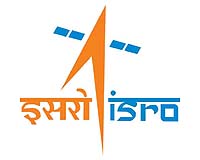 lunar 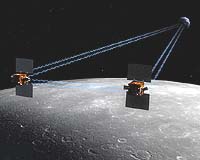 cassini 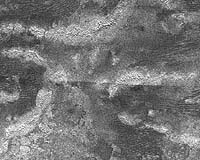 |
| Previous Issues | Feb 05 | Feb 04 | Feb 01 | Jan 31 | Jan 30 |
| The contents herein, unless otherwise known to be public domain, are Copyright 1995-2007 - SpaceDaily. AFP and UPI Wire Stories are copyright Agence France-Presse and United Press International. ESA Portal Reports are copyright European Space Agency. All NASA sourced material is public domain. Additional copyrights may apply in whole or part to other bona fide parties. Advertising does not imply endorsement, agreement or approval of any opinions, statements or information provided by SpaceDaily on any web page published or hosted by SpaceDaily. Privacy statement |